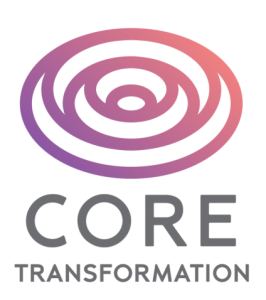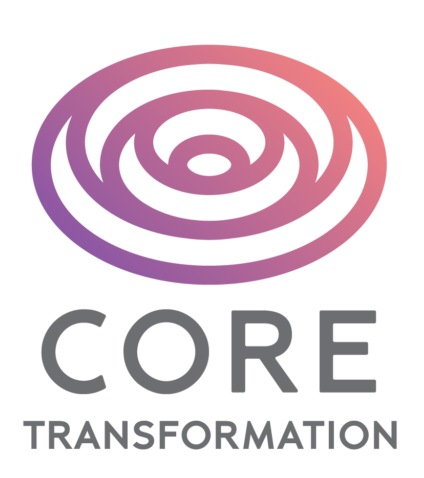Me and My Shadow
By Kimberlie Chenoweth
(©) 2013 Andreas NLP
(©) 2013 Andreas NLP

Core Transformation is a powerful tool for awakening to the spirit that lives within each one of us. This process can complement the journey of anyone who seeks to be more in touch with their spiritual nature.
Like the image of David freed by Michelangelo’s vision and his loving hands, our true essence as spiritual beings comes to light as we sculpt through the layers of “shadow stuff” that keep us from fully experiencing the “David” within. Unlike Michelangelo, however, we cannot simply carve away our shadows (aspects of ourselves that we try to hide or deny because we have deemed them unacceptable.) We must transform them.
Connirae Andreas, the developer of the Core Transformation process, states on her audiotape “Spirituality in NLP”, [Some] parts of ourselves can connect deeply right away to our sense of our spiritual nature…, and then we have other parts of us that come out in daily life that seem totally different…. We meditate, we pray, we do whatever it is to develop our spiritual nature. And then we have these other parts that get angry, that feel jealous, that are enraged at things, that feel intimidated sometimes–that don’t seem very spiritual.
With Core Transformation, we look to our non-spiritual parts for the bit of Spirit that we’ve been missing, that we’ve been leaving out in some way.
These words resonated with me when I first heard them several years ago. I was looking for a way to deal with those unacceptable parts of myself that seemed polarized to my desired outcome of evolving Spirit-ward. This polarization had tormented me for much of my life. It was important to me to present myself as a kind and loving person, yet I didn’t always feel loving and kind.
I distinctly remember one night when I was in college, feeling full of anger, self-loathing, and shame, all for no readily apparent reason. The occasional uprising of this terrible shadow disturbed me greatly, and on this particular night I was in tears, feeling empty, alone, and without inner resources to calm myself. My solution at that time was to call a friend and timidly confess to her what a horrible person I was. I have no recollection of her specific response to me, but I know I felt liberated by the experience of admitting to her the existence of this shadow and that I felt embraced by her loving acceptance of me, shadow and all. Just that much was enough to free me for the time being, until I discovered other resources for more complete resolution.
Many authors and leaders in the field of spirituality today are addressing the age-old need to include in our spiritual work some practice of embracing and integrating (rather than attempting to transcend and bypass) our shadows. Paradoxically, the darkness is the source of great light. I, for one, appreciate the direct, trustworthy path offered by the practice of Core Transformation to assist us in transforming our “shadows”.
“Brenda” was a participant in a Core Transformation workshop. She was struggling with an addiction to marijuana. As a psychotherapist, she worked with children and adolescents, so she tried hard to hide her addiction. Although she didn’t go to work while under the influence, she obsessed on the job about getting to go home and smoke.
With great courage, she identified the transformation of this addiction as her primary focus for the weekend workshop. What she discovered was that the underlying positive purpose of the addiction was to have a deep sense of peace within. She had longed for a sense of peace as a young child but had never experienced it fully.
As she was guided through each step of the Core Transformation process, she was able to integrate this sense of peace into her life–past, present, and future–in such a compelling way that she no longer felt the urge to smoke marijuana. Two months later, she reported on the freedom she had found . “I don’t have to go there anymore….[“Inner Peace”] is integrated throughout my whole body and limbs, not just my head or my heart…. I don’t even think about it anymore.”
In his wonderful poem “The Song of a Man Who Has Come Through,” D.H. Lawrence exclaims, “What is the knocking? What is the knocking at the door in the night? It is somebody wants to do us harm. No, no, it is the three strange angels. Admit them, admit them.”
The practice of Core Transformation nudges us insistently in the direction of our true nature, what Pythagoras described as our “divine humanity”. No matter what shadow thoughts, feelings, and behaviors we face, the positive purpose knocking at the door of consciousness (in the form of a limitation) has everything to do with reawakening to our spiritual nature. When we lovingly open the door and invite deep dialogue with these strange angels, we rediscover aspects of ourselves that have been hidden in darkness. Typically described with words like “Peace”, “Love”, “Oneness with God”, “Being”, and “Wholeness”, the Core positive purpose is a wellspring of generative change and healing which supports being in touch with our spritual nature.
In my own experience practicing Core Transformation through time, I’ve been pleasantly surprised to find that some shadow parts are transformed even without my conscious participation. Other people have reported similar findings. As with any practice, at some point Core Transformation seems to take on a life of its own. Our unconscious minds become so familiar with the process that we may find ourselves spontaneously stepping into profound states of peace and joy, and limitations resolving easily and naturally.
Through the practice of Core Transformation, we come to wholeheartedly appreciate, rather than judge and reject, the parts of ourselves that still lurk in the shadows. When we follow the deep longing within the shadow, it reliably guides us to our true selfhood–to the Spirit within.
Kimberlie Chenoweth, M.A., is a certified Core Transformation Trainer and Master NLP Practitioner with a private practice based in Glenwood Springs, CO. She can be reached at tilicho [at] sopris.net.

